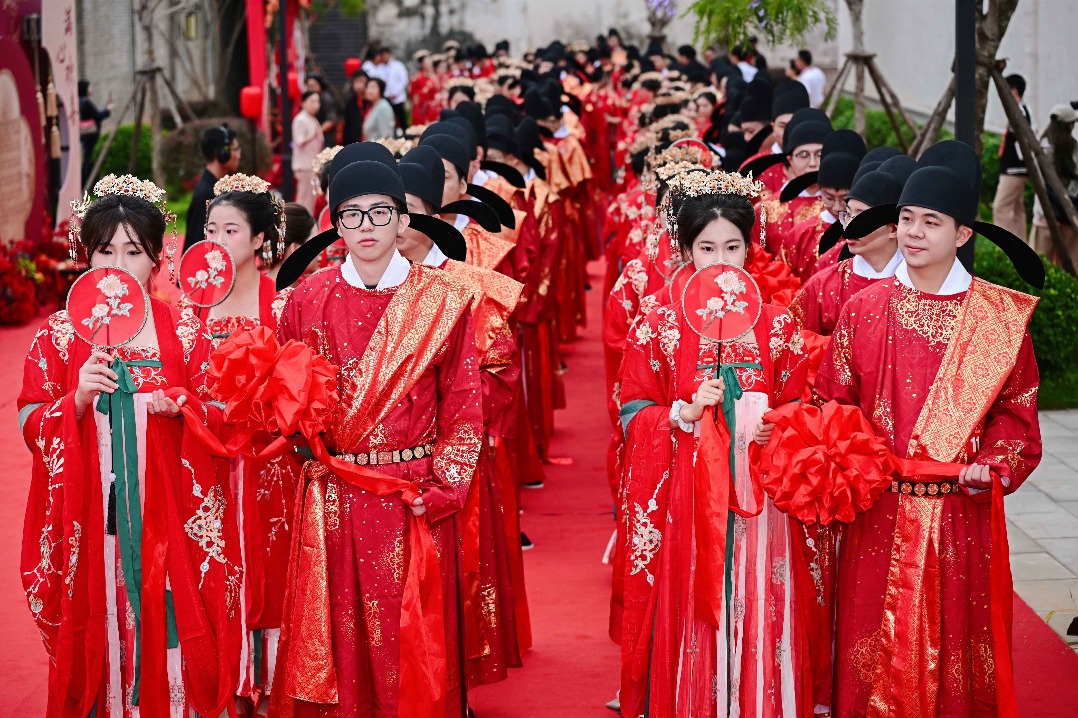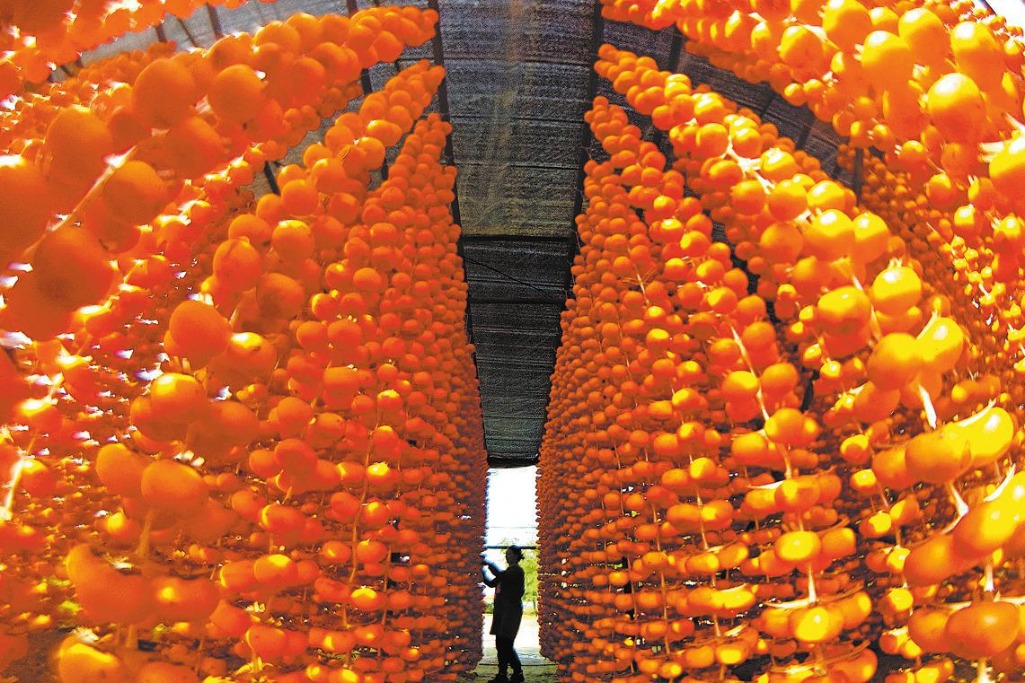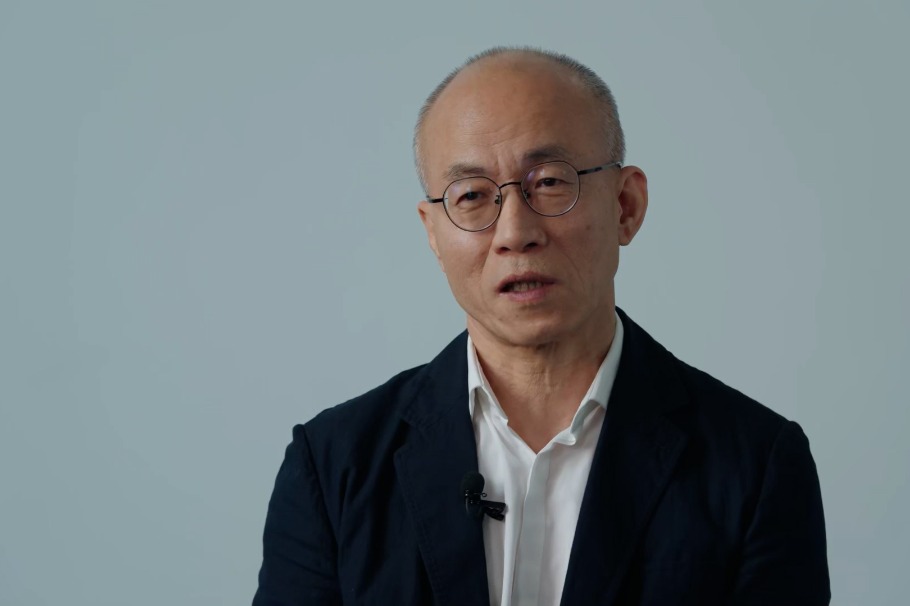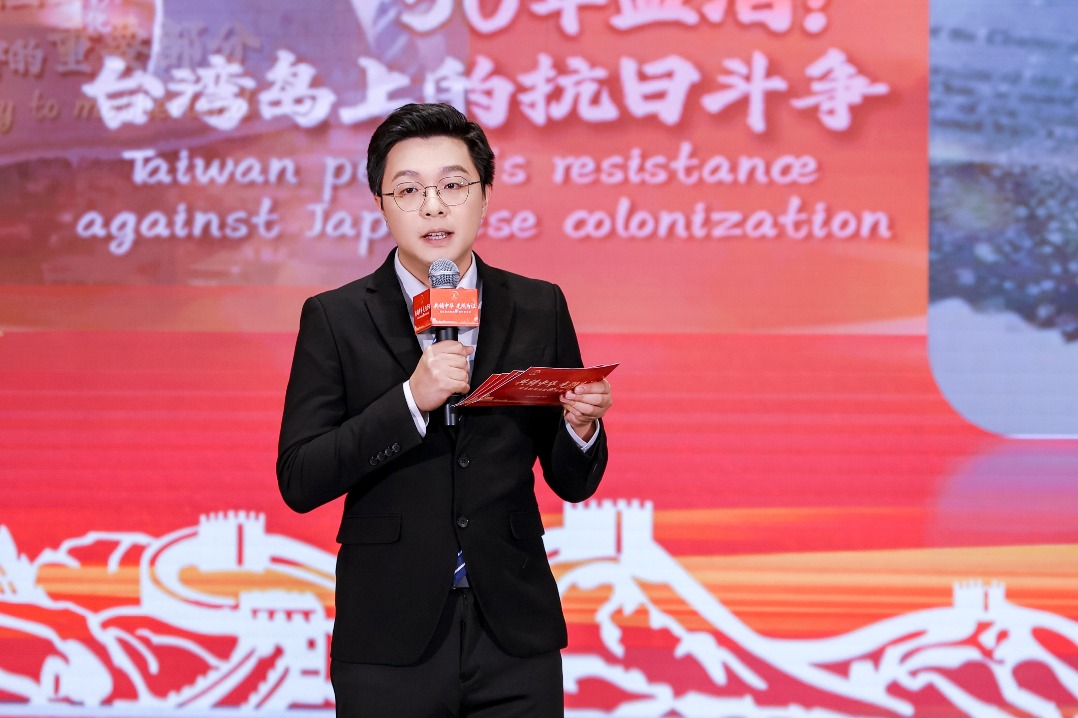Vision puts growth back on track as challenges rage globally


The Chinese economy has encountered unprecedented challenges this year as the COVID-19 pandemic, which has weakened the world economy, and rising global trade protectionism have combined to exert serious pressure on both domestic consumption and exports.
However, China has managed to mobilize all resources available to fight the pandemic, restore economic activities, and cope with the impact of rising protectionism.
Although growth dropped sharply following the pandemic's outbreak in the first quarter, the economy gradually restored its momentum and steamed ahead starting from the second quarter.
The International Monetary Fund estimated in October that China's gross domestic product is expected to expand by 1.9 percent in 2020, up 0.9 percentage point from its June forecast.
That would make China the only major economy to see positive growth this year.
Underpinning this was the Chinese people's remarkable spirit of self-restraint and sacrifice during the pandemic and the appropriate decisions made by the country's top leadership during the difficult times so that the country could adopt prompt and balanced approaches to get the national economy onto the right growth track while also preventing financial risks from arising, analysts said.
Top policymakers in Beijing have responded to the changing domestic and overseas environment with a new policy choice, known as the "dual-circulation" development paradigm, in which the domestic market is the mainstay and the domestic and international markets support each other.
Dual-circulation is a significant strategic decision of China's top leadership based on the country's new development stage, new historic mission and new environment, and it is also a significant theoretical achievement of Xi Jinping Thought on Socialist Economy with Chinese Characteristics for a New Era, Vice-Premier Liu He wrote in a recent article published in People's Daily.
Liu said that China's efforts to build a new development paradigm and to substantially boost domestic demand will help unleash strong and long-lasting growth momentum and will also help promote the steady recovery and growth of the global economy.
China has deepened supply-side structural reform, enhanced macroeconomic regulation and fueled domestic demand growth, and has made achievements such as better-than-expected economic growth and strong improvements in people's livelihoods in the past year, according to the communique of the Fifth Plenary Session of the 19th Central Committee of the Communist Party of China.
The communique said that China would "maintain strategic resolve" and "stick to its own agenda" of development, and actively respond to the risks, challenges and opportunities brought about by changes in the external environment.
It also said the country will integrate the strategies of expanding domestic demand and deepening supply-side structural reforms, to create and promote new demand through innovation-driven, high-quality supplies.
All of this is part of Xi Jinping Thought on Socialist Economy with Chinese Characteristics for a New Era, which has been guiding the country's economic governance in recent years.
At the Central Economic Work Conference, convened in late 2017, Xi Jinping Thought on Socialist Economy with Chinese Characteristics for a New Era was put forward for the first time. It contains a series of principles for managing the Chinese economy, such as pursuit of high-quality development, supply-side structural reform, and allowing the market to play the decisive role in resource allocation while more effectively bringing out the role of government in market regulation.
Since 2017, President Xi Jinping has on various occasions pointed out that the country should "maintain strategic resolve" and "adhere to worst-case scenario thinking" to cope with uncertainties.
He has also stressed at many meetings the importance of China forming a new development paradigm featuring dual circulation since May this year.
Official data showed the country's major economic indicators had already entered positive territory in the third quarter.
Economists from Swiss bank UBS expect China's GDP growth to rebound to 8.2 percent in 2021, led by exports and domestic consumption. "We see exports growing by 11 to 12 percent as the global economy recovers from recession, helped by rapid vaccine development. Domestic consumption will be supported by stronger income growth and confidence as activities continue to normalize," they said in a research note.
The economists see the "dual-circulation" development paradigm as one of the key themes of China's next five-year development plan as it aims to deepen structural reform, boost domestic demand, support innovation and technological self-sufficiency, and further market opening.
"The central authorities have adhered to the philosophy that China should stick to its own agenda (of development), which I think is very important," said Zhu Min, head of the National Institute of Financial Research at Tsinghua University and a former deputy managing director of the International Monetary Fund.
Although China is recovering from the impact of the pandemic, the virus is still spreading in many major economies, which may lead to the rise of anti-globalization populist sentiment, he said.
He added that ceaseless printing of money by central banks worldwide has caused excessive liquidity, and the world is trapped in the uncertainty of low inflation and stagnant growth.
The pandemic and economic uncertainties will also give rise to global political uncertainties, he said.
Pivot of new blueprint
Experts estimated the new "dual-circulation" development paradigm is expected to be the pivot of the upcoming 14th Five-Year Plan (2021-25).
The Party leadership's proposals for formulating the 14th Five-Year Plan (2021-25) for National Economic and Social Development and the Long-Range Objectives Through the Year 2035, unveiled on Nov 3, elaborated on the establishment of the "dual-circulation" development paradigm.
That includes taking domestic demand expansion as a strategic basis and integrating it with deepening supply-side structural reform to create new demand through innovation and high-quality supply, optimizing the supply structure to better match it with domestic demand, and exploiting comparative advantages to build a strong domestic market while making the country an important player in international trade.
Cai Fang, vice-president of the Chinese Academy of Social Sciences, said the "dual-circulation" development paradigm efficiently combines opening-up and domestic development, in response to the changing international and domestic situations.
The world economy has entered a long period of stagnation and is troubled by protectionism and anti-globalization sentiment while, at the same time, China's labor costs are soaring and the domestic market is growing, he said.
The new development paradigm is aimed at a higher level of opening-up with better utilization of the country's comparative advantages related to international value chains, regional development and the domestic market, he said.
Putting forward the "dual-circulation" development paradigm, China also aims to implement its coordinated regional development strategies so that different regions can supplement each other to pursue the integrated development of the national economy.
Liang Haiming, chairman of the Guangzhou-based China Silk Road iValley Research Institute, suggested that the country should strengthen its high-speed railway and international airfreight networks to improve logistics services for the dual-circulation strategy and engage in closer economic exchanges with regions and countries involved in the Belt and Road Initiative and from the Association of Southeast Asian Nations, Central Asia and Europe.
The unexpected attack of the pandemic has not changed China's overall and predetermined development path, experts said.
While rushing to carry out supportive measures to stimulate the economy after the eruption of the COVID-19 pandemic, for instance, China has continued to press ahead with its regional development strategies, such as the establishment of the Hainan Free Trade Port in August, and pursuing higher-level economic opening-up through further expanding foreign companies' access to sectors including banking, insurance and securities, and shortening the negative list to expand the scope of investment for foreign investors.
Expedient policies
During the pandemic, China has introduced a series of expedient policies, such as tax cuts, increasing fiscal expenditure, and lowering the real costs of borrowing to bail out the corporate sector, especially small businesses.
Policymakers, however, have been on the alert so that policies aimed at stabilizing economic growth do not cause side effects that could sow the seeds of future risks.
Central bank governor Yi Gang, for example, said at a June forum that the authorities would consider beforehand "the appropriate time of exit of the financial support policies" implemented during the pandemic.
Unlike some other major economies, "China has always been very prudent" in financial risk prevention as it eases its monetary stance in its battle against the pandemic, said Li Yang, chairman of the National Institution for Finance and Development at the Chinese Academy of Social Sciences. As proof of this, the country's debts and assets still largely match each other on its financial balance sheet, he said.
- China to launch new-generation crewed spaceship in 2026
- China's top political advisory body concludes standing committee session
- China to celebrate the 160th birth anniversary of Sun Yat-sen
- PLA says Philippines' South China Sea 'joint patrol' undermines regional peace, stability
- Experts call China's next five-year plan a critical period for reforms
- Cheng Li-wun assumes leadership of Kuomintang




































